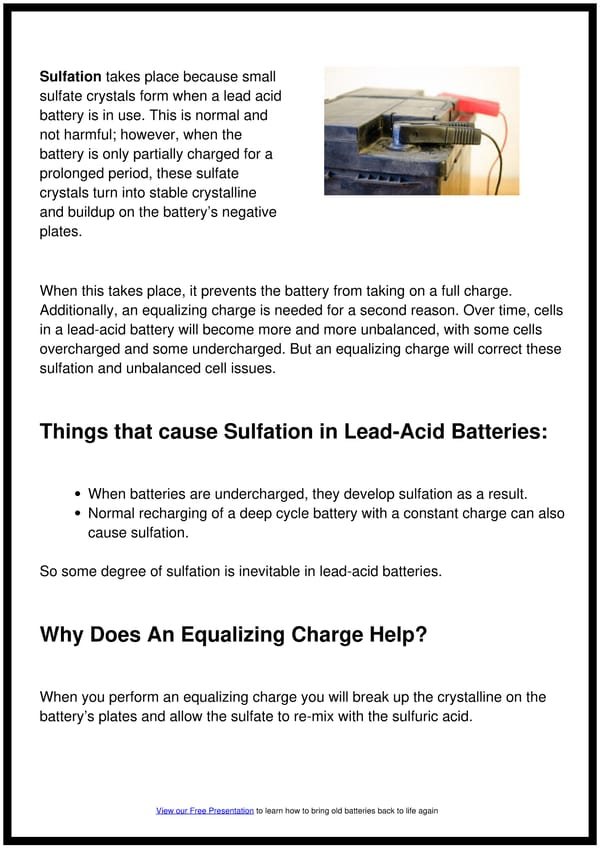Sulfation takes place because small sulfate crystals form when a lead acid battery is in use. This is normal and not harmful; however, when the battery is only partially charged for a prolonged period, these sulfate crystals turn into stable crystalline and buildup on the battery’s negative plates. When this takes place, it prevents the battery from taking on a full charge. Additionally, an equalizing charge is needed for a second reason. Over time, cells in a lead-acid battery will become more and more unbalanced, with some cells overcharged and some undercharged. But an equalizing charge will correct these sulfation and unbalanced cell issues. Things that cause Sulfation in Lead-Acid Batteries: When batteries are undercharged, they develop sulfation as a result. Normal recharging of a deep cycle battery with a constant charge can also cause sulfation. So some degree of sulfation is inevitable in lead-acid batteries. Why Does An Equalizing Charge Help? When you perform an equalizing charge you will break up the crystalline on the battery’s plates and allow the sulfate to re-mix with the sulfuric acid. View our Free Presentation to learn how to bring old batteries back to life again
 What Is An Equalizing Charge, Why Is It Needed, And How to Apply One To a Lead Acid Battery Page 2 Page 4
What Is An Equalizing Charge, Why Is It Needed, And How to Apply One To a Lead Acid Battery Page 2 Page 4